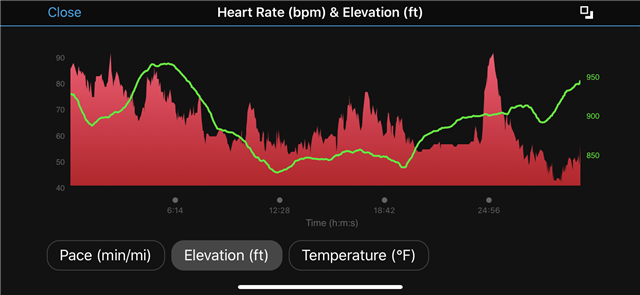Table Of Content
Your heart rate or “bpm” is the number of times your heart beats in a minute. It can change in response to things like your activity level and emotional state. If you already have heart disease, you should carefully monitor your condition and stick to your treatment plan. This maximum heart rate calculation helps you see if you’re exercising too hard or not putting in enough energy. Your target heart rate uses this calculation to reflect the ideal bpm you need for a great workout.
Tips for Monitoring Heart Rate
If you have AFib, ideally, your resting heart rate should be between 60–100 beats per minute. Remember, normal heart rate while doing housework should fall somewhere in between these two ranges or into a slight overlap at either end of the ranges depending on the intensity of the activity. Your walking heart rate will go up or down depending on how quickly you're moving. In general, however, walking is a low- to moderate-intensity activity.
10 Ways to Enjoy Exercise in Hot Weather Safely, According to Athletes - Self
10 Ways to Enjoy Exercise in Hot Weather Safely, According to Athletes.
Posted: Fri, 21 Jul 2023 07:00:00 GMT [source]
You can trust our health information
Or, perhaps the cause of your skyrocketing heart rate isn’t physical at all. Should your heart rate be alarmingly high after doing simple housework, it’s most likely a sign that you’re not in the best shape at the moment, but there are various other possibilities. Deb Hipp is a freelance health and medical writer and editor who lives in Kansas City, Missouri. She is a former investigative reporter with more than 25 years of experience as a journalist and writer.
Spend Time in Nature to Reduce Stress and Anxiety
A person should undergo regular checks to determine their heart rates at rest and while exercising. This can help them understand if any changes in their heart rate may be dangerous. A very low heart rate can indicate sepsis or another condition that needs medical attention. To determine what your "normal" is, you'll need to figure out your target heart rate for light/moderate exercise (yes, house-cleaning counts as light exercise!). If you’re experiencing a heart rate that’s consistently too high or too low, you should make an appointment with a doctor, as there are a variety of reasons this could be occurring. While not all of these reasons are dangerous, some could be signs of heart trouble.
Merely thinking stressful thoughts can send our pulses racing, so if you’re under stress or thinking about stressful things while doing your housework, it will contribute to a higher heart rate. Anything from a brisk walk to dancing can be considered moderate exercise, so housework typically falls just shy of the moderate exercise threshold. Whatever you land on when that minute is up is your resting heart rate. If you are experiencing serious medical symptoms, please see the National Library of Medicine’s list of signs you need emergency medical attention or call 911. To find your resting heart rate, press the tips of your first two fingers (not your thumb) lightly over the artery on the inside of your wrist, on the side of your thumb. To find your heart rate, place your index and middle fingers gently against the underside of your wrist on the side just below the base of your thumb until you can feel the pulse.
Mayo Clinic electrophysiologist Fred Kusumoto, M.D., explains what happens in the heart to create atrial fibrillation and what can be done to fix it. Our experts continually monitor the health and wellness space, and we update our articles when new information becomes available. Sit or lie down and relax for a few minutes, taking nice, easy breaths. When you’re feeling sufficiently chill, grab a stopwatch (or use your watch/phone) and count your pulse for a minute. Over the last decade, our products have fulfilled the health needs of millions of people.
In this article, we will explore the significance of walking heart rate and how integrating heart rate monitoring into your routine can help you unlock your true fitness potential. Anyone who notices fluctuating heart rate should seek medical advice. A doctor will do some tests and work with them on a treatment plan.

Possible Causes for Elevated Heart Rate
Apple Watch: All of the health and fitness features, explained - CNET
Apple Watch: All of the health and fitness features, explained.
Posted: Mon, 03 Jun 2019 07:00:00 GMT [source]
You can also measure heart rate by placing two fingers on one of the carotid arteries located on each side of your neck. Even if there does not appear to be any danger, a doctor can provide assistance in reducing the risk of complications. Treatment will vary depending on the type of heart block a person has. For milder forms of heart block, a person may only need monitoring by a cardiologist. People with higher degrees of heart block will need a pacemaker.
Rarely, the sinus node can jump-start the heart rate with no apparent cause — no stress, illness or high activity level. About half of the time, this phenomenon occurs after recovery from a serious illness, usually a viral illness. You can gauge your intensity during any activity — including walking — according to target heart rate zones for moderate-intensity and high-intensity exercise. If your resting heart rate is higher than the normal adult heart rate of 60 to 100 beats per minute, regular activity is key to bringing the heart rate down. “That activity could be exercise, but it doesn’t have to be dedicated exercise.
There are also heart rate monitors you can wear on your arm or around your chest (with an adjustable strap) that are fairly reliable and accurate, according to Harvard Health Publishing. Additionally, you should visit your doctor regularly for physicals. Not only is it good practice, but it can also help with the early detection of high cholesterol or blood pressure abnormalities. This includes exercising regularly, eating heart-healthy foods, minimizing alcohol, and maintaining a moderate weight.
A heart rate below 60 bpm while resting is too slow for most people. A slow heart rate, also known as bradycardia, can be normal for people like athletes who are very fit. If a person’s heart rate is too low or is only low temporarily, treatment may not be necessary. In deep sleep, the heart rate may fall below 60 bpm, especially in people who have very low heart rates while awake. The heart rate greatly increases when a person is very active or exercising. If your heart rate is consistently elevated while on a certain medication, your doctor may switch you to another drug that's less likely to affect your heart.
However, we usually don’t think much about what a miracle our heart is and how it keeps us alive. Keeping track of our heart rates as we go about our daily activities can tell us a lot about our cardiovascular fitness and health. In this article, we will explore everything you need to know about heart rates, including resting and walking heart rates, and how they are calculated. Understanding and monitoring your walking heart rate is essential for maximizing the health benefits of your exercise routine. By maintaining your heart rate within your target zone, you can optimize your workout intensity, improve cardiovascular health, manage weight more effectively, and reduce the risk of chronic diseases. Paroxysmal supraventricular tachycardia (PSVT) can cause a person’s heart rate to spike suddenly, then return abruptly to the usual rate.
We encourage patients with prolonged sinus tachycardia to improve their overall fitness level. For some patients, the elevated heart rate is the only symptom. Some have a lifelong history of sinus tachycardia in the 110 beats per minute range, and they lead a normal, healthy life. And often the inappropriate sinus tachycardia will improve in time without treatment. We see patients who are concerned because their heart rate stays elevated in the range of 100 to 130 beats per minute.

No comments:
Post a Comment